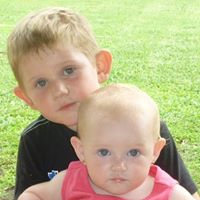Bruce J Bates
age ~79
from Portsmouth, RI
Bruce Bates Phones & Addresses
- 111 Frank Coelho Dr, Portsmouth, RI 02871
- Newport, RI
Specialities
Buyer's Agent • Listing Agent
Name / Title
Company / Classification
Phones & Addresses
President
Leadwin Doors Ltd
Leadwin Decorative Doors
Doors. Moldings
Leadwin Decorative Doors
Doors. Moldings
12303 Industrial Rd, Surrey, BC V3V 3S4
6045894717, 6045894712
6045894717, 6045894712
President
Leadwin Doors Ltd
Doors · Moldings
Doors · Moldings
6045894717, 6045894712
incorporator
East Randolph County Volunteer Fire Department, Inc
CHARITABLE,RELIGIOUS,EDUCATIONAL AND SCIENTIFIC PURPOSES
CHARITABLE,RELIGIOUS,EDUCATIONAL AND SCIENTIFIC PURPOSES
Pastor
Blackstone Valley Church of Christ
Religious Organization
Religious Organization
141 Bear Hl Rd, Valley Falls, RI 02864
PO Box 7095, Valley Falls, RI 02864
4013343792
PO Box 7095, Valley Falls, RI 02864
4013343792
President
ROCK 'N ROLL LTD
1324 Old Fall Riv Rd, North Dartmouth, MA 02747
Lawyers & Attorneys
Us Patents
-
Optical Fstop/Resolution Apparatus And Method For Specified Depth-Of-Field
view source -
US Patent:6389229, May 14, 2002
-
Filed:May 17, 2000
-
Appl. No.:09/575542
-
Inventors:Mark J. DiPippo - Newport RI
Bruce J. Bates - Portsmouth RI -
Assignee:The United States of America as represented by the Secretary of the Navy - Washington DC
-
International Classification:G03B 700
-
US Classification:396 63, 396 65
-
Abstract:A method and apparatus to determine the f that provides optimal image resolution for a predetermined depth-of-field. An approximate and exact method and apparatus are provided to determine the optimal resolution f. The optimal resolution f is a function of the lens focal length, depth-of-field in front of the object, wavelength of light, and distance of the object to the lens center. Once the optimal resolution f is determined, the camera is adjusted to the closest discrete f available. When the approximate field technique is utilized, the camera must be adjusted to the discrete f closest to, but not exceeding, the computed f.
-
System And Apparatus For The Detection Of Randomness In Time Series Distributions Made Up Of Sparse Data Sets
view source -
US Patent:6397234, May 28, 2002
-
Filed:Aug 20, 1999
-
Appl. No.:09/379210
-
Inventors:Chung T. Nguyen - Austin TX
Bruce J. Bates - Portsmouth RI -
Assignee:The United States of America as represented by the Secretary of the Navy - Washington DC
-
International Classification:G06F 700
-
US Classification:708200, 382228
-
Abstract:A method and apparatus are provided for automatically characterizing the spatial arrangement among the data points of a time series distribution in a data processing system wherein the classification of said time series distribution is required. The method and apparatus utilize a grid in Cartesian coordinates to determine (1) the number of cells in the grid containing at least-one input data point of the time series distribution; (2) the expected number of cells which would contain at least one data point in a random distribution in said grid; and (3) an upper and lower probability of false alarm above and below said expected value utilizing a discrete binomial probability relationship in order to analyze the randomness characteristic of the input time series distribution. A labeling device also is provided to label the time series distribution as either random or nonrandom, and/or random or nonrandom.
-
Enhanced Model Identification In Signal Processing Using Arbitrary Exponential Functions
view source -
US Patent:6430522, Aug 6, 2002
-
Filed:Mar 27, 2000
-
Appl. No.:09/536488
-
Inventors:Chung T. Nguyen - Austin TX
Bruce J. Bates - Portsmouth RI -
Assignee:The United States of America as represented by the Secretary of the Navy - Washington DC
-
International Classification:G06F 1710
-
US Classification:702181, 703 2
-
Abstract:A method for finding a probability density function (PDF) and its statistical moments for a chosen one of four newly derived probability models for an arbitrary exponential function of the forms g(x)=x e , -âxâ; The model chosen will depend on the domain of the data and whether information on the parameters a and b exists. These parameters may typically be the mean or average of the data and the standard deviation, respectively. Non-linear regression analyses are performed on the data distribution and a basis function is reconstructed from the estimates in the final solution set to obtain a PDF, a moment generating function and the mean and variance. Simple hypotheses about the behavior of such functional forms may be tested statistically once the empirical least squares methods have identified an applicable model derived from actual measurements.
-
System And Apparatus For The Detection Of Randomness In Three Dimensional Time Series Distributions Made Up Of Sparse Data Sets
view source -
US Patent:6466516, Oct 15, 2002
-
Filed:Oct 4, 2000
-
Appl. No.:09/678877
-
Inventors:Chung T. Nguyen - Austin TX
Bruce J. Bates - Portsmouth RI -
Assignee:The United States of America as represented by the Secretary of the Navy - Washington DC
-
International Classification:G06K 962
-
US Classification:367131, 382228, 706 20
-
Abstract:A method and apparatus are provided for automatically characterizing the spatial arrangement among the data points of a three-dimensional time series distribution in a data processing system wherein the classification of said time series distribution is required. The method and apparatus utilize grids in Cartesian coordinates to determine (1) the number of cubes in the grids containing at least one input data point of the time series distribution; (2) the expected number of cubes which would contain at least one data point in a random distribution in said grids; and (3) an upper and lower probability of false alarm above and below said expected value utilizing a discrete binomial probability relationship in order to analyze the randomness characteristic of the input time series distribution. A labeling device also is provided to label the time series distribution as either random or nonrandom, and/or random or nonrandom within what probability, prior to its output from the invention to the remainder of the data processing system for further analysis.
-
Method For Data Gap Compensation
view source -
US Patent:56755538, Oct 7, 1997
-
Filed:Jun 28, 1996
-
Appl. No.:8/682895
-
Inventors:Francis J. O'Brien - Newport RI
Chung T. Nguyen - Bristol RI
Sherry E. Hammel - Little Compton RI
Bruce J. Bates - Portsmouth RI
Steven C. Nardone - Narragansett RI -
Assignee:The United States of America as represented by the Secretary of the Navy - Washington DC
-
International Classification:G01S 1500
-
US Classification:367135
-
Abstract:The present invention comprises a method for filling in missing data intels in a quantized time-dependent data signal that is generated by, e. g. , an underwater acoustic sensing device. In accordance with one embodiment of the invention, this quantized time-dependent data signal is analyzed to determine the number and location of any intervals of missing data, i. e. , gaps in the time series data signal caused by noise in the sensing equipment or the local environment. The quantized time-dependent data signal is also modified by a low pass filter to remove any undesirable high frequency noise components within the signal. A plurality of mathematical models are then individually tested to derive an optimum regression curve for that model, relative to a selected portion of the signal data immediately preceding each previously identified data gap. The aforesaid selected portion is empirically determined on the basis of a data base of signal values compiled from actual undersea propagated signals received in cases of known target motion scenarios. An optimum regression curve is that regression curve, linear or nonlinear, for which a mathematical convergence of the model is achieved.
-
Model Identification And Characterization Of Error Structures In Signal Processing
view source -
US Patent:57842973, Jul 21, 1998
-
Filed:Jan 13, 1997
-
Appl. No.:8/782362
-
Inventors:Francis J. O'Brien - Newport RI
Chung T. Nguyen - Bristol RI
Bruce J. Bates - Portsmouth RI -
Assignee:The United States of America as represented by the Secretary of the Navy - Washington DC
-
International Classification:G01S 1500
-
US Classification:364554
-
Abstract:A method for finding a probability density function (PDF) and its statistical moments for an arbitrary exponential function of the form g(x)=. alpha. x. sup. m e. sup. -. beta. x. spsp. n,0-1 are real constants in one-dimensional distributions and g(x. sub. 1,x. sub. 2,. . . ,x. sub. l) in the hyperplane. Non-linear regression analyses are performed on the data distribution and a root-mean-square (RMS) is calculated and recorded for each solution set until convergence. The basis function is reconstructed from the estimates in the final solution set and a PDF is obtained. The moment generating function (MGF), which characterizes any statistical moment of the distribution, is obtained using a novel function derived by the inventors and the mean and variance are obtained in standard fashion. Simple hypotheses about the behavior of such functional forms may be tested statistically once the empirical least squares methods have identified an applicable model derived from actual measurements.
-
Three-Dimensional Volume Selection Tool
view source -
US Patent:58867007, Mar 23, 1999
-
Filed:Jul 24, 1997
-
Appl. No.:8/903242
-
Inventors:Mark J. Di Pippo - Newport RI
Bruce J. Bates - Portsmouth RI -
Assignee:The United States of America as represented by the Secretary of the Navy - Washington DC
-
International Classification:G06F 300
-
US Classification:345355
-
Abstract:A method for manipulating a three-dimensional sub-volume within a graphical display is disclosed and includes selecting an option from a menu screen to relocate or re-size a three-dimensional sub-volume within the graphical display, and upon selecting the option to relocate or re-size, proceeding with the following. A cursor is placed on either the sub-volume or a selected corner of the sub-volume within the graphical display, a selected one of a left and a right mouse buttons is depressed, and the sub-volume is dragged to a relocation area or resized within an "x-y" plane and/or a "z" plane of the graphical display according to depression of the selected mouse button and placement of the cursor. When the selected one of the left and right mouse buttons is released, the x, y, and z-coordinates of the relocation area and/or resizing are locked. The sub-volume is, therefore, manipulated within a three-dimensional frame of reference by controlling the mouse.
-
System And Computer-Implemented Method For Fractal-Dimension Measurement For Target-Motion Analysis Noise Discrimination
view source -
US Patent:56967004, Dec 9, 1997
-
Filed:Jun 26, 1995
-
Appl. No.:8/494674
-
Inventors:Francis J. O'Brien - Newport RI
Chung T. Nguyen - Bristol RI
Sherry E. Hammel - Little Compton RI
Bruce J. Bates - Portsmouth RI
Steven C. Nardone - Narragansett RI -
Assignee:The United States of America as represented by the Secretary of the Navy - Washington DC
-
International Classification:G06F 1760
-
US Classification:364550
-
Abstract:A signal processing system and computer-implemented method for processing a igital data sequence representing an input signal to generate a fractal dimension value. The system includes a correlation integral value generation module, correlation plot generation module, a segmentation module, correlation dimension generation module, and a control module. The correlation integral value generation module generates a series of correlation integral values for points w. sub. n (k) in "N"-dimensional space corresponding to vectors of said digital data sequence, and in particular generates inter-point distance values within each of a plurality of volume elements of said "N"-dimensional space. The correlation plot generation module generates a correlation integral plot comprising a plot of the correlation integral values as a function of said "N"-dimensional space volume elements. The segmentation module generates, from the plot, a series of correlation integral plot segments.
Wikipedia References

Bruce Bates
Plaxo

Mr Bruce H Bates, JR
view sourceClassmates

Bruce Bates (Bagley)
view sourceSchools:
Fairfield Intermediate School Winnsboro SC 1998-2002
Community:
Marie Mincey

Bruce Bates
view sourceSchools:
Laytonville High School Laytonville CA 1993-1997
Community:
Jeannie Sala, Lynne Philips, Dawn Cameron

Bruce Bates
view sourceSchools:
Ft. Lupton High School Ft. Lupton CO 1967-1971
Community:
David Vigil

Bruce Bates
view sourceSchools:
Pascack Hills High School Montvale NJ 1975-1979
Community:
Ed Butowsky, Judy Tallon, Robert Lull, Jim Simpson, Jennifer Bruml, Richard Hahn, William Teale, Bill Shinners

Bruce Bates
view sourceSchools:
Juniper Valley Public School 128 Middle Village NY 1957-1961
Community:
Ronald Pagano, Jacqueline Sawyer, Georgann Siano, Raymond Garvey, Sondra Galfano

Bruce Bates
view sourceSchools:
Barbour High School Philippi WV 1987-1991
Community:
Az Ahm, Stephani Maxson, Eddie Smith, Paula Corbin, Chad Reed, Charles Millican, Jay Ferguson, Jeff Frey, James Edgell, Regina Ramsburg, Brenda Phillips

Culpeper County High Scho...
view sourceGraduates:
Bruce Bates (1971-1975),
Rhonda Pickett (1988-1992),
Rachel Shaw (1981-1985),
Patty Corbin (1974-1978),
Scheryl Schonauer (1977-1981)
Rhonda Pickett (1988-1992),
Rachel Shaw (1981-1985),
Patty Corbin (1974-1978),
Scheryl Schonauer (1977-1981)
Youtube
Myspace
Googleplus

Bruce Bates
Lived:
Cumberland, RI
Portsmouth, VA
Memphis, TN
Searcy, AR
Fredericksburg, VA
Portsmouth, VA
Memphis, TN
Searcy, AR
Fredericksburg, VA
Work:
Blackstone Valley Church of Christ - Minister (1997)
Relationship:
Married
About:
I love my wife Janet and my ever growing daughter Annie.
Tagline:
Looking for anyone who wants to learn how to have the life Jesus did

Bruce Bates
Work:
Usmc

Bruce Bates
Tagline:
Internet Marketing, Social Marketing, Traffic Guru, and Network Marketing Trainer

Bruce Bates

Bruce Bates

Bruce Bates

Bruce Bates

Bruce Bates
view source
Bruce Bates
view source
Bruce Bates
view source
Bruce W. Bates
view source
Bruce H. Bates
view source
Bruce Bates
view source
Bruce Bates
view source
Bruce C Bates
view sourceNews

As tick-bite illnesses spread, Mainers warned against ignoring symptoms
view source- To prevent Lyme disease and other tick-borne illnesses, the best protection is to avoid contact with ticks, Dr. Bruce Bates, director of the Maine CDC, saud in a recent news release. Bates and other public health experts recommend the following preventive measures for those who work or recreate in
- Date: May 09, 2018
- Category: Health
- Source: Google
Flickr
Get Report for Bruce J Bates from Portsmouth, RI, age ~79

















